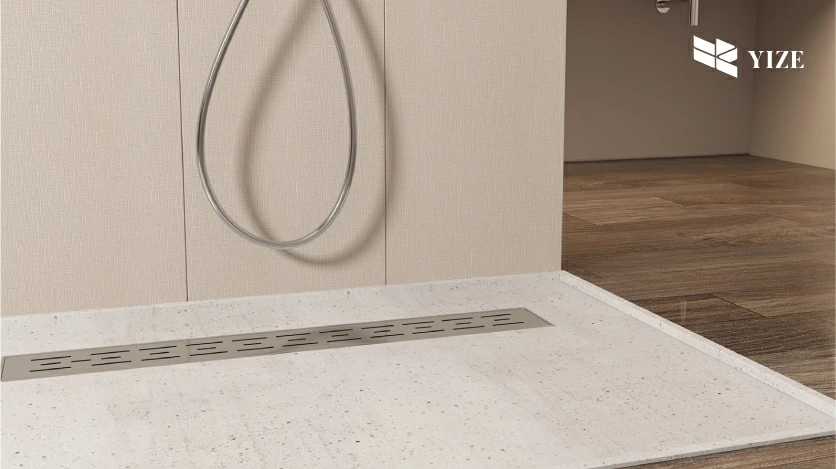The shower curtain is one of the most affected parts of the bathroom by mold and mildew. Water splashes on the curtains, making them moist, perfect for mildew to grow. As long as you use the shower, mildew must grow at one point. The bathrooms create a humid and warm environment perfect for mildew growth.
Mildew looks gross and comes with a foul smell. Nobody wants their bathrooms smelly and looking nasty. It can be embarrassing, especially when you have guests. Your shower will look unattended and unpleasant. Besides, if you don’t remove it may spread to other areas.
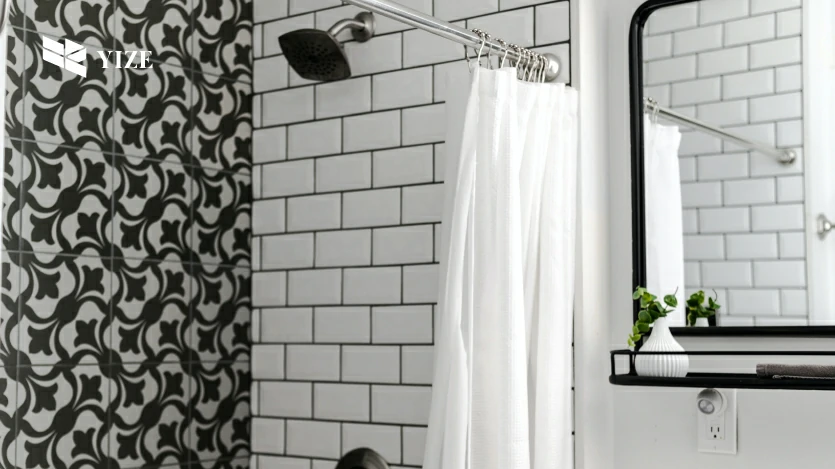
Mildew grows into a mold, which may contribute to respiratory conditions. This article looks at how to remove mildew from a shower curtain. We will also review how to prevent it from growing again.
What is mildew?
Mildew is a type of fungus that grows across various surfaces under specific conditions. The first condition is food, which includes any organic material. It also needs enough moisture, such as a relative humidity ranging from 62% to 93%. Third, mildew requires an optimal temperature ranging from 25 °C to 31 °C. It is important to note that some mildew types might thrive in freezing temperatures to 31 °C. Acidic conditions also boost its growth.
What is the difference between mildew and mold?
Many people cannot tell the difference between mold and mildew. The main difference is that mildew grows on visible surfaces. While mold can grow anywhere. Managing mold is more difficult compared to managing mildew. Another difference is that mildew appears powdery, while mold looks fuzzy.
Mold contains spots with irregular shapes, while mildew has a flat pattern. The mold spots come in different colors, such as yellow, brown, blue, white, gray, or black. On the other hand, mildew can be white, yellow, or gray.
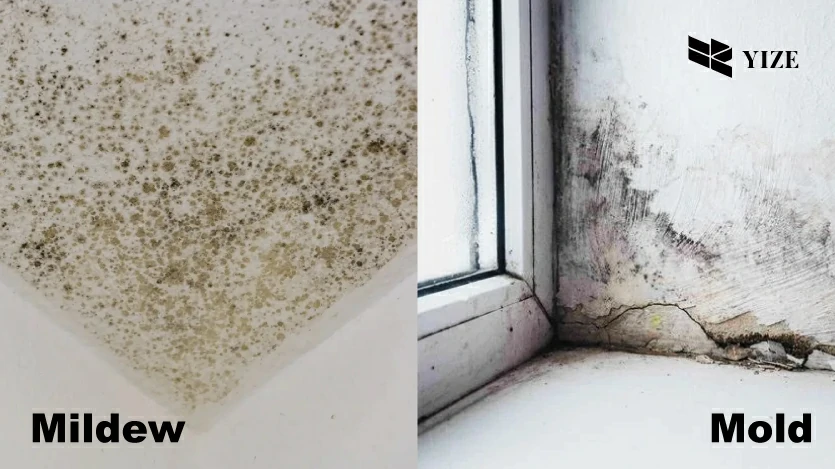
Ways to remove mildew from a shower curtain
There are several ways to remove mildew from shower curtains. These methods involve using natural means to use chemicals such as bleach. You can choose any that meets your style and philosophy.
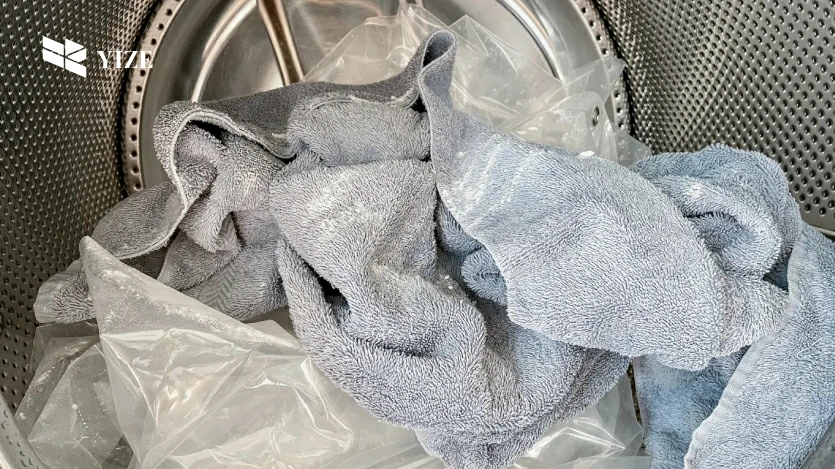
Use the washing machine
You can get rid of shower curtain mildew using a washing machine. Most of them are machine washable, including plastic ones. Be sure to check the laundry symbol for confirmation first. Besides, different materials may need custom cycle settings and temperature configurations.
Since shower curtains are light, you can add a towel or two to the load. This will help prevents tears and wrinkling. Besides, it will also help in rubbing and scrubbing off the mildew. Use the normal amount of detergent and warm water. You can also add a cup of baking soda to remove tough stains. When rinsing, you can use distilled vinegar to help remove the baking soda. Dry the fabric and place it back in the shower.
Hydrogen Peroxide
Hydrogen peroxide is one of the most effective mildew cleaners. In hospitals, doctors use it to disinfect wounds thanks to its microbial properties. Hydrogen peroxide can kill viruses, bacteria, mold, and fungi spores. The best thing is that it’s inexpensive and available in many stores.
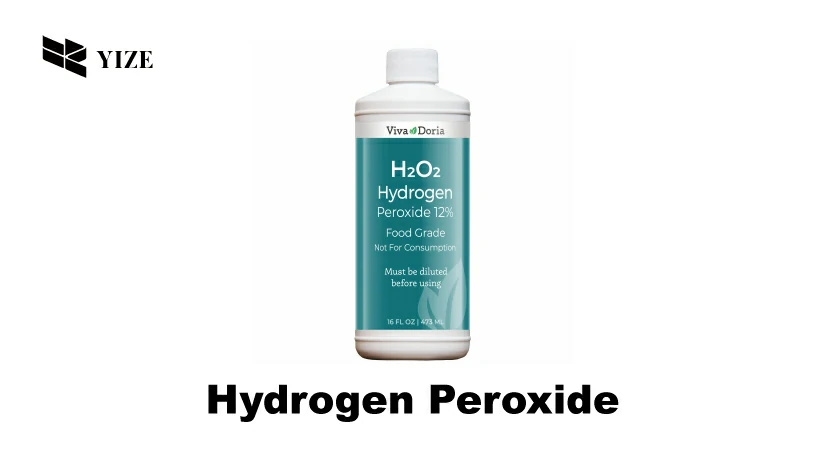
Hydrogen peroxide has a disadvantage since it can cause discoloration in some materials due to its bleaching qualities. Also, you must wear protective clothing like gloves while handling hydrogen peroxide. It can irritate if it comes into contact with your skin. The hydrogen peroxide side is made up of an O-O, a bond that is weak and susceptible to heat and direct sunlight. When storing the remaining contents for future use, store them in a cool dark place.
When you apply hydrogen peroxide to mildew, it breaks down its DNA and proteins. Since these are essential components, they cannot last for long before dying. After using hydrogen peroxide to kill mildew, you need to remove the foul smell. The best way to remove the smell is to use activated charcoal, vinegar, salt water, or baking soda. Follow the steps below.
● Remove the curtain from the shower.
● Mix one part water and two parts hydrogen peroxide
● lay the shower curtain in a basin or bathtub
● Spray the solution on the curtain.
● Leave it idle for ten to 20 minutes, then rinse
● Scrub the mildew using your normal detergent or baking soda until it’s spotless.
● Flip over the curtain and repeat the same procedure on the other side.
● Dry the shower curtain and hang it back.
Use baking soda
If you are a nature lover, use baking soda. It can kill mildew without causing harm to other living organisms. Besides, it is an affordable ingredient available in almost any home.
Baking soda can also help get rid of the foul, mildew smell. It is the best alternative for commercial anti-mildew cleaners. Additionally, it has a mild pH of around 8.1, making it ideal for cleaning any fabric. Acidic cleaners can cause discoloration to some shower curtain materials.
Baking soda is more effective while using other cleaners, such as vinegar and hydrogen peroxide. These ingredients help to kill different types of mildew.
White vinegar
Vinegar is another household ingredient that you can use to get rid of mildew. It contains approximately five to eight percent of acetic acid. The acid in white vinegar handles killing and inhibiting the growth of fungi.
Acetic acid has about 2.5 pH, which makes it a strong acid. Such condition makes it difficult for bacteria, virus, and fungi to thrive. That’s the reason why vinegar is considered an antibacterial and anti-fungal cleaner.
Vinegar can be useful, but it’s more effective when you mix it with another cleaner. Researchers say it’s more effective in killing specific types of household fungi. For instance, acetic acid can kill Peniccilium Chrsogenum but hardly gets rid of Aspergillus Fumigatus. These are the two most common household fungi.
If it does not work, it is because you’re dealing with Aspergillus Fumigatus. Try the other methods that we have listed for you in this article.
While using white vinegar, it’s important to use protective cleaning. Acetic acid is strong and can cause skin or eye irritation. Wear gloves and goggles while handling vinegar.
Use commercial mildew removers
Commercial mildew contains powerful enzymes or acids that help eradicate mildew. The cleaner’s effectiveness also depends on the quality of the ingredients used. Some cleaners are more effective than others. Make sure to use a reliable commercial cleaner to remove the mildew. If you are a nature lover, you can use commercial enzyme cleaners. These will not harm you or your pets in the house. Be careful when handling commercial mildew removal made of strong chemicals. The chemicals can cause burns or irritations. Wear gloves when handling them to avoid getting into contact.
Bleaching agent
If the shower curtain is widely affected, you should use bleach. Bleaching is a good option, but not for colored curtains. There is some color-safe bleach that you can use. For white fabrics, you can use any bleach.
Apply the bleach to the mildew and let it sit for a few minutes. Place the curtain inside the washing machine, then add some warm water. Add more bleach and set the timer. Next, drain the water and put fresh water to rinse the curtain. It will help get rid of bleach from the fabric. Now dry the curtain and hang it back in the shower room.
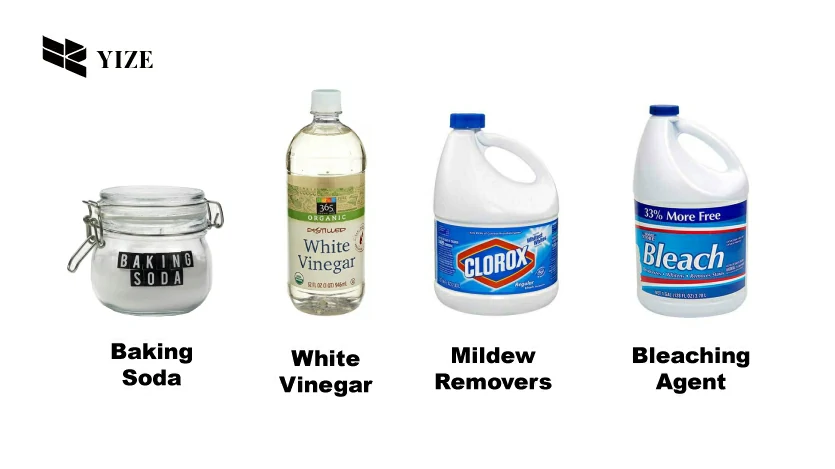
Ways to prevent mildew from developing on the shower curtains
You can prevent mildew from your shower curtain by following these tips.
Fix leaks
Bathroom leakages provide a humid environment. If the water leaks for a while, then mildew will start growing. To prevent this from happening, fix any leaks you come across.
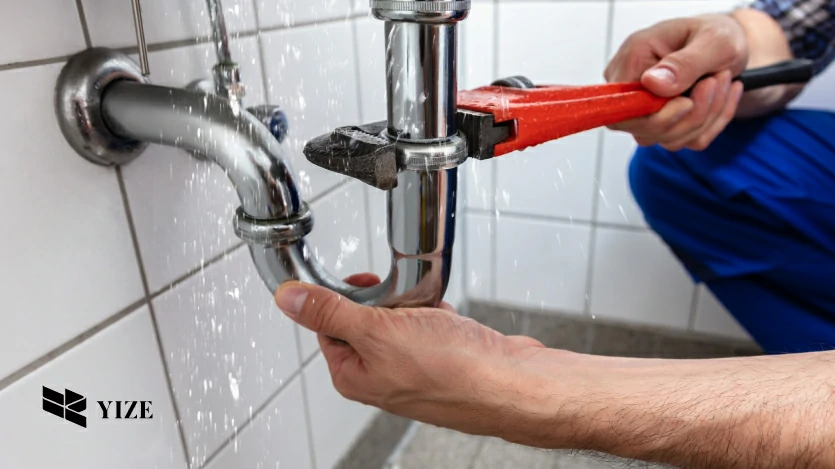
Wash bath towels and mats
You can prevent mildew growth by washing bath towels and mats. These two items in the bathroom hold moisture. You can use any anti-mildew agents to clean them. If you prevent mildew from growing on the shower mats, it won’t spread to the shower curtains.

Declutter the shower
The more things you have in the shower, the higher the chances of a mildew infestation. Many of these items are good at retaining humidity. Once mildew starts growing on one item, it will spread to the rest. Shower curtains can be caught up in this mix. To prevent that from happening, you need to declutter the shower. Leave only the must-use items.
Shake the curtains
It is important to shake the shower curtains after me. The main goal here is to help the curtains dry faster. If you leave them unattended, they will keep moisture, facilitating mildew growth.
Run the exhaust fan
You should run the exhaust fan for at least 15 minutes after using the shower. This device helps lower the humidity. It also helps eliminate moisture by pulling dry air into the bathroom.
Open bathroom window
Open the bathroom window to let in dry air. Sun exposure kills mildew and can also prevent it from growing. Do not open the window if the outside is humid.

Leave the bathroom door open
This can help the humid air to escape. When you leave the door open dry air from other rooms will enter the bathroom.
Use air conditioner
The perfect temperature for mildew develops in 60 to 80 degrees Fahrenheit. This can be challenging as it’s in the same temperature range for human comfort. To avoid mildew from developing on shower curtains, keep the temperature low. If you can lower the temperature, then mildew will not grow. Alternatively, you can leave your house at low temperatures whenever you are away.
DIY shower spray
Mixing vinegar, baking soda, and water create an anti-mildew formula. Put the mixture in a spray bottle, then use it on the curtains and other surfaces.
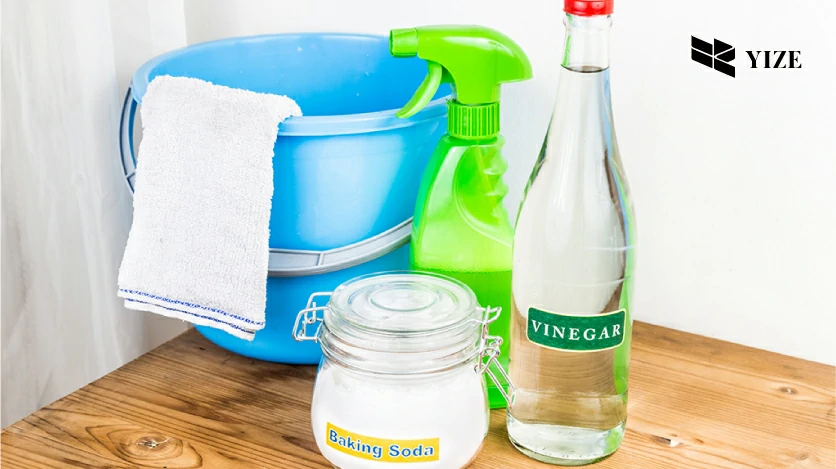
Hang the sponge, loofah, or wash rag
When you hang these items, they tend to dry faster. If you leave them on the shower floor, they will not dry fast, hence facilitating mildew growth.
Place shower products on a storage rack or soap dish
Water can trap itself on the bottom of products when you leave them on the floor. It is advisable to place soap o a soap dish. Then place it alongside other products, such as shampoo, conditioners, and brushes, on a rack.
Let light in
Mildew grows in the dark. You can prevent it from growing by always leaving the lights on. Alternatively, you can set a time to turn on the lights every hour. During the day, open the doors and windows to let in light. Apart from preventing its growth, sunlight can also kill mildew.

Final Thoughts
Mildew on a shower curtain smells and looks nauseating. It can embarrass you when guests come to visit. Besides, it can grow into a mold and spur health risks. For example, coughing, headache, itching, runny nose, and difficulty breathing. Once you get rid of mildew successfully, start practicing preventive measures to prevent it from developing again. Hydrogen peroxide, vinegar, and baking soda can remove mildew from shower curtains. These ingredients are easily available and affordable. Shower drainage is important to prevent mildew or mold from developing. A humid environment is the number one cause, and you should avoid it by all means. When you use high-quality drains, the water drains quickly. Thus no traces are left to facilitate their growth. YZDRAIN is a high-quality sanitary ware manufacturer with more than 18 years of experience. We produce bathroom accessories, shower drains, and wash basins. Reach out to us for any questions or to receive your free quote.
